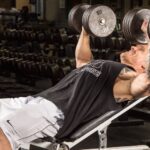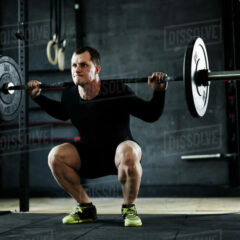https://weightliftingforpower.com/advanced-chest-building-techniques-for-bodybuilders/
Advanced Chest Building Techniques For Bodybuilders
Understanding how your chest is structured is critical to sculpting it effectively. The chest comprises two major muscles: the pectoralis major and the pectoralis minor, which both play crucial roles in your chest workouts.
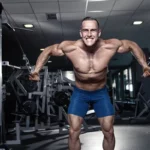
The pectoralis major is the more considerable muscle that covers most of your chest surface, giving it that broad, strong appearance when appropriately developed. The clavicular head (upper chest) and the sternal head (middle and lower chest) combine to form the muscle. Depending on the angle of your workout, you can target each part with different movements.
Below the pectoralis major lies the pectoralis minor. This smaller muscle helps stabilize your shoulder blade, and even though it’s less visible, it’s invaluable for functional strength and the overall balance of your chest workout routines.
Engaging supporting muscles such as the deltoids and triceps is crucial for maximizing the effectiveness of chest exercises. Understanding how these muscles work together can help you avoid injury and maximize efficiency in your movements.
By understanding and applying these anatomical insights, bodybuilders can better pinpoint their workouts to target specific areas. This precision ensures even muscle development and can help avoid imbalances that might lead to injury or reduced performance.
Harnessing the Power of Advanced Training Techniques
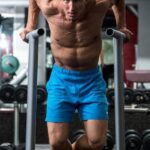
Building a chest that turns heads means going beyond the basics. It’s about integrating advanced techniques that push your muscles past their comfort zone, leading to more significant gains.
One powerful method is incorporating drop sets. These involve performing an exercise until failure, then reducing the weight and continuing until you can’t do any more reps. They’re a surefire way to recruit deep muscle fibers and push your chest to its limits without significantly changing your routine.
Supersets also deserve a spot in your training schedule. You reduce rest time and increase workout intensity by pairing exercises that target opposing muscle groups, like the chest and back. It keeps your heart rate up and contributes to better overall conditioning while still focusing on chest development.
Then there’s the concept of time under tension (TUT). Slow down your reps to maximize TUT, emphasizing the lifting and lowering phases. It keeps the muscles engaged longer, encouraging hypertrophy and strength gains.
Remember the principle of progressive overload. Gradually increase your weights or repetitions to challenge your muscles continuously. Progressive overload is the foundation of all muscle growth—without it, your progress might plateau.
Everyone hits a plateau at some point, but advanced techniques can help you shake things up. Varying your workouts with these methods keeps your training fresh and consistently tests your chest muscles, forcing them to adapt and grow.
Tailoring Nutrition and Recovery for Optimal Growth
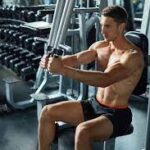
Your chest training will only reach its full potential with a nutrition plan that supports it. Proteins are vital building blocks your muscles require to repair themselves and grow stronger. Boost your protein intake to unlock your full potential! Incorporate lean meats, fish, eggs, or plant-based sources like lentils and tofu into your meals.
Remember to underestimate the power of carbs, too. They’re your body’s fuel and help replenish glycogen stores depleted during intense workouts. Add whole grains, fresh fruits, and vibrant vegetables to your daily meals to boost energy levels. They are vital for sustained vitality and overall health.
Healthy fats are crucial, too. They support hormone production, including testosterone, which is pivotal for muscle building. Avocados, nuts, and olive oil are great options for your diet plan.
Crafting a meal plan that prioritizes these nutrients can be your secret weapon for muscle hypertrophy and strength. To maximize the benefits of your workouts, focus on preparing balanced meals before and after your sessions. This approach will significantly enhance your results.
Supplements can offer significant benefits, but it’s important to remember that their quality varies greatly. Whey protein, BCAAs, and creatine are popular among bodybuilders. Always choose high-quality products and consult a nutritionist for your needs.
Muscles don’t grow if they’re not allowed time to repair. Prioritize good sleep and rest days between intense workouts to allow muscles to rebuild and grow thicker and more robust.
Precautions and Avoidance of Common Mistakes
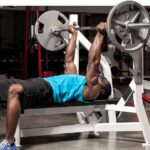
When stepping up your chest training game with advanced techniques, it’s easy to push too hard or fast, leading to injuries. Proper form and technique are non-negotiable. They ensure you’re targeting the right muscles and not placing undue stress on joints and tendons.
Injuries often sneak up when you’re not paying attention. Strained muscles, tendons, and rotator cuffs are common issues that can arise from rushing through or adding excessive weight to your routines. Listen to your body—if it signals discomfort or pain, that’s your cue to reassess your approach.
Overtraining is a common pitfall, especially when chasing quick gains. Signs include persistent fatigue, diminished performance, and even mood swings. Prioritizing rest days and incorporating flexibility exercises allows your body to recover and strengthen, ultimately reducing the risk of burnout and injuries. Embrace this essential practice for better performance and long-term health.
Flexibility and mobility exercises should be a staple in your regimen. They help enhance your range of motion and support joint health, making lifting more efficient and safe. Simple routines like shoulder rotations and chest stretches can make a big difference.
Integrating these precautions into your training promotes safety and guarantees sustainable progress in your development. Take each step thoughtfully and listen to your body’s feedback to continue building a robust and resilient chest.
